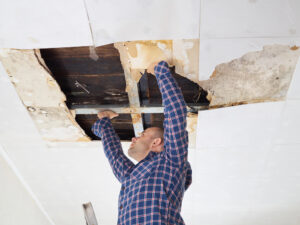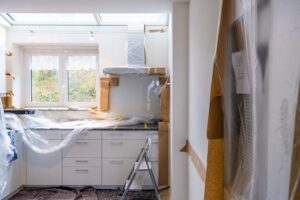Time to get a building facade restoration and want to make sure you get it done right?
A well-maintained building exterior is essential if you want your building to project an image of success, professionalism, and pride.
Your facade is constantly battling the elements and needs regular upkeep to maintain its best appearance.
This can be seen with the small cracks, fading paint, or damaged masonry on your building facade.
These might look like minor issues, but they can hint at larger issues lurking beneath the surface.
Ignoring these warning signs puts your building – and those who use it– at risk. A deteriorating facade can compromise structural integrity, lower property value, and tarnish your reputation.
These problems also tend to worsen over time which can lead to increasingly expensive repairs.
Investing in a professional facade assessment and restoration is the key to preserving your building’s longevity and maximising its appeal.
This proactive approach not only protects your investment but also gives you confidence that your building facade can withstand the test of time, protecting the people inside.
Professional Solutions for a Long-Lasting Building Facade
Before any repairs begin, have a thorough evaluation of your building’s facade. It is like a doctor diagnosing a problem before prescribing treatment.
Qualified experts, like structural engineers or facade specialists, will conduct various assessments to pinpoint the root causes of the deterioration.
3 Types of Assessments:
1. Visual Inspection
This is the starting point, where experts examine the facade for visible signs of damage like cracks, discoloration, or water stains.
2. Non-Destructive Testing
These methods provide more in-depth information without damaging the facade. Examples include infrared thermography (to detect moisture) or sounding (to identify hollow areas).
3. Invasive Testing
In some cases, small samples of materials may be taken for laboratory analysis to determine the specific cause of deterioration.
4 Repair and Restoration Techniques:
Based on the assessment findings, a customised restoration plan is developed. Here are some common techniques:
1. Masonry Repairs
- Crack Repair: Cracks are injected with specialised materials to restore structural integrity and prevent water intrusion.
- Repointing: This involves replacing damaged mortar between bricks or stones to maintain stability and prevent moisture buildup.
2. Cleaning Methods
- Soft Washing: A gentle technique using low-pressure water and specialised cleaning solutions to remove dirt, grime, and biological growth.
- Chemical Cleaning: Stronger chemicals may be used for specific stains or when soft washing isn’t enough.
3. Waterproofing and Sealant Replacement
- Applying water-repellent coatings and replacing failed sealants are essential steps to protect the facade from future water damage.
4. Structural Stabilisation
- If the assessment reveals underlying structural issues, more extensive repairs may be needed.
This can include reinforcing compromised areas or addressing foundation problems.
The Value Proposition of Facade Restoration
Investing in a building facade restoration isn’t just about aesthetics; it’s an investment that provides a multitude of benefits.
It brings more than the immediate improvements in appearance, a restoration ensures the long-term health of your building and a return on your investment.
The 4 Facade Restoration Value Propositions:
- Increased Property Value
A well-maintained facade directly increases the market value of your property.
Whether you’re considering selling in the future or simply want to maximise your asset’s worth, restoration delivers a solid return on investment (ROI).
- Improved Energy Performance
A compromised facade can lead to air leaks and poor insulation. Restoration addresses these issues, making your building more energy-efficient.
This translates to lower heating and cooling costs, saving you money over time.
- Enhanced Aesthetics & Curb Appeal
A revitalised facade is transformative. It instantly enhances a building’s visual appeal, boosting pride of ownership and creating a positive impression on clients, tenants, or potential buyers.
- Long-term Protection
Proactive facade restoration acts as preventative medicine for your building. By addressing deterioration early, you avoid more extensive and expensive repairs down the road.
This extends the lifespan of your building and protects your investment for years to come.
Modernise Your Facade With the Right Materials and Techniques
Facade restoration also evolves your building into its best form.
New and innovative approaches offer exciting possibilities for updating the look, performance, and sustainability of your building facade.
Here are some ways modern techniques can be used:
- Innovative Materials
Beyond traditional brick and stone, materials like GFRC (Glass Fiber Reinforced Concrete) or metal panels offer versatile repair and design options.
These materials can mimic traditional looks while providing increased durability and creative design opportunities.
- Sustainability Focus
Eco-friendly materials, such as recycled content composites or terracotta with improved insulation properties, are increasingly available.
Restoration practices can also prioritise reducing waste and minimising environmental impact.
- The Role of Technology
Tools like 3D modelling allow for detailed visualisations of the facade before and after restoration.
It ensures accurate design decisions and facilitates communication between client and contractor.
It aids in precision measurements and material calculations.
Partner With the Experts for Lasting Results
Selecting the right building facade restoration contractor is a critical decision that shouldn’t be based on price alone.
While cost is a factor to consider, prioritising experience and qualifications will ensure a successful project that delivers lasting value.
Look for companies with a proven track record in restoring buildings similar to yours.
Ask about their specific experience with the materials and techniques required for your project.
Don’t hesitate to request references and follow up with past clients to get a firsthand perspective on the contractor’s:
– Workmanship.
– Communication style.
– Ability to stay on schedule and budget.
Here’s what to look for:
- Credentials & Experience
Seek companies with proven expertise in your building’s facade type and restoration techniques.
Ask about relevant certifications, licences, and insurance. Check their track record for projects of similar scope and complexity.
- Client Testimonials
Request references and contact past clients to inquire about their experience with the contractor.
Did the project stay on budget, was the workmanship high quality, and were they responsive to concerns?
4 Reasons a Detailed Plan Is Important
A successful facade restoration relies on a well-defined plan outlining every aspect of the project, from initial assessment to final inspection.
This comprehensive plan ensures clear communication, avoids misunderstandings, and sets the stage for a smooth and successful restoration process.
Here are some key elements of a detailed restoration plan:
- Scope of Work
A meticulous breakdown of all repairs, materials, and techniques to be employed.
This ensures both the contractor and the building owner are on the same page and avoids change orders or unexpected costs later.
- Timeline
Developing a realistic timeline for completion is crucial.
This includes defining clear milestones throughout the project and factoring in potential delays due to weather or unforeseen issues.
The plan should also minimise disruption to building occupants, whether it’s a business with regular operating hours or a residential building with tenants.
- Safety Protocols
Building facade restoration often involves working at heights and with potentially hazardous materials.
The plan should detail comprehensive safety protocols to protect workers and the public during the process.
This includes using appropriate fall protection equipment, implementing dust control measures, and notifying surrounding businesses or residents of any potential disruptions.
- Communication Plan
Regular and transparent communication is essential for a smooth-running project.
The plan should outline how often the contractor will provide status updates to the building owner, how questions or concerns will be addressed, and who the designated point of contact is for each party.
This fosters trust and collaboration throughout the restoration process.
Why Facade Restoration Is an Investment to Your Building’s Future?
Building facade restoration protects your asset, increases its value, and safeguards its longevity. It’s a wise investment that pays dividends for years to come.
Don’t hesitate to reach out to qualified restoration experts like MKJ Projects.
As building facade renovation specialists, we can ensure your structure stands the test of time, protecting those who use your building and your investment.
Request a quote from our team at MKJ Projects today and take the first step towards a revitalised and well-protected building.








